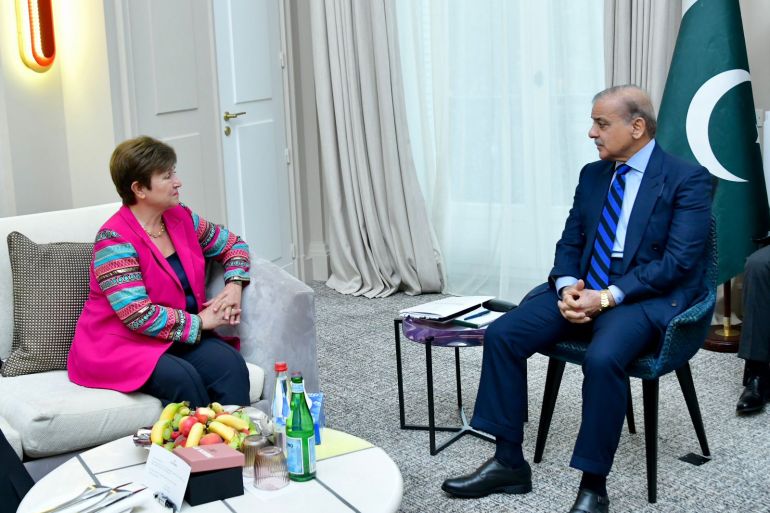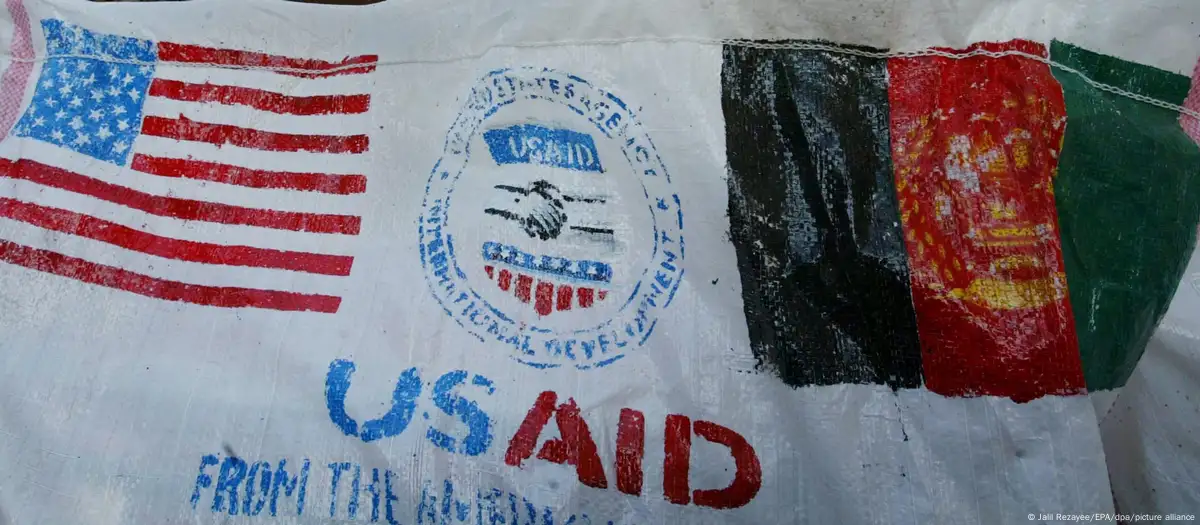Why did Pakistan need the IMF deal? What does it need to do now?
As Pakistan clinches a crucial $3bn bailout hours before deadline, here’s a look at what it means for the cash-strapped nation.

The International Monetary Fund and Pakistan have reached a staff-level agreement on a bigger than expected $3bn Stand-By Arrangement (SBA), a last-minute rescue package for the country facing an acute balance of payments crisis.
Islamabad was racing against time to unlock $1.1bn under the IMF’s ninth review of a $6.5bn Extended Fund Facility agreed upon in 2019. The programme was due to expire on Friday.
The IMF said the SBA “builds on” efforts under the EFF. The board of the global lender will meet in mid-July to approve the staff-level agreement.
Here are some facts about the importance of unlocking the funds for the cash-strapped South Asian country of 230 million people and the challenges it has faced:
What is Pakistan getting?
The nine-month SBA will release nearly $3bn, or 111 percent of Pakistan’s IMF quota, the lender said. The agreement is subject to approval by the IMF’s Executive Board, which is expected to consider the request by mid-July, it said.
Such approvals are generally granted once a staff-level deal is done. The Pakistan government was expecting about $2.5bn from the IMF, according to media reports.
Pakistan earlier cleared eight of the 11 listed programme reviews, with the ninth review pending since November last year. The delay was already the longest since at least 2008.
The ninth review had been stalled due to differences between the fund and Islamabad over policy actions, including external financing needs and a budget that meets programme goals.
A successful deal with the IMF could also help unlock credit from other financiers who are looking for a clean bill of health from the IMF for the ailing $350bn economy. This includes raising money from the private market.
General elections are due by November and the latest deal could boost the government of Prime Minister Shehbaz Sharif.
The initial draft of the 2023-2024 budget presented in parliament earlier this month failed to meet IMF expectations but was hurriedly revised to introduce new taxes and expenditure cuts.
The country’s central bank also hiked the key rate by 100 basis points in an emergency meeting on Monday, barely two weeks after keeping the rate unchanged in a scheduled meeting.
Pakistan’s power sector has been specifically mentioned by the IMF, which called for a “timely” rebasing of tariffs to ensure that costs are recovered. This means raising prices for consumers despite already record high inflation in what is an election year.
Pakistan’s central bank should withdraw import restrictions put in place to control external payments in the face of fast-depleting foreign exchange reserves, which had throttled economic growth. Reserves stand at $3.5bn, barely enough to cover a month’s worth of controlled imports.
The country has been asked to commit fully to a market determined exchange rate, remove controls and eliminate multiple exchange rate practices in different markets, even as the rupee has depreciated to record lows in recent weeks.
The central bank has also been asked to remain “proactive” to reduce inflation. The bank paused its rate hike process at a scheduled meeting this month. Days later, it implemented an off-cycle 100 basis point increase to take its policy rate to 22 percent on the demand of the IMF.
Losses in state-owned enterprises, which are burning a hole in government finances, will need stronger governance. The government has budgeted only about 15 billion Pakistani rupees ($52.42m) in receipts from a stalled privatisation process.
How bad is the state of Pakistan’s economy?
The government has earmarked $2.5bn in external receipts from the IMF in its federal budget for the financial year 2024.
Pakistan needs upwards of $22bn to service external debt, make interest payments, and finance its current account for FY24. Reserves, at $3.5bn, are at a critical level, enough to cover barely one month of controlled imports.
Pakistan’s credit rating has suffered due to macroeconomic uncertainty: Three key rating agencies recently cut Pakistan’s ratings – Standard & Poor’s rating for Pakistan stands at CCC+, Moody’s at Caa3 and Fitch at CCC-.
Despite the larger than expected IMF bailout, the agreement stressed that Pakistan will have to continue to mobilise multilateral and bilateral financial support.
Saudi Arabia and the United Arab Emirates have pledged a combined $3bn that is expected to come in now that the IMF deal has materialised. Debt rollovers from China, Pakistan’s largest creditor, will also be key.
Ensuring the materialisation and building of a spending framework for pledges secured earlier this year at an international donor conference will be key. More than $9bn in climate-related pledges were made to help Pakistan recover from devastating floods in 2022.
Pakistan needs $22bn to fund its external payment obligations, including international debt servicing, in the financial year 2024, which starts on Saturday, July 1, and ends on June 30, 2024.
-al jazeera







